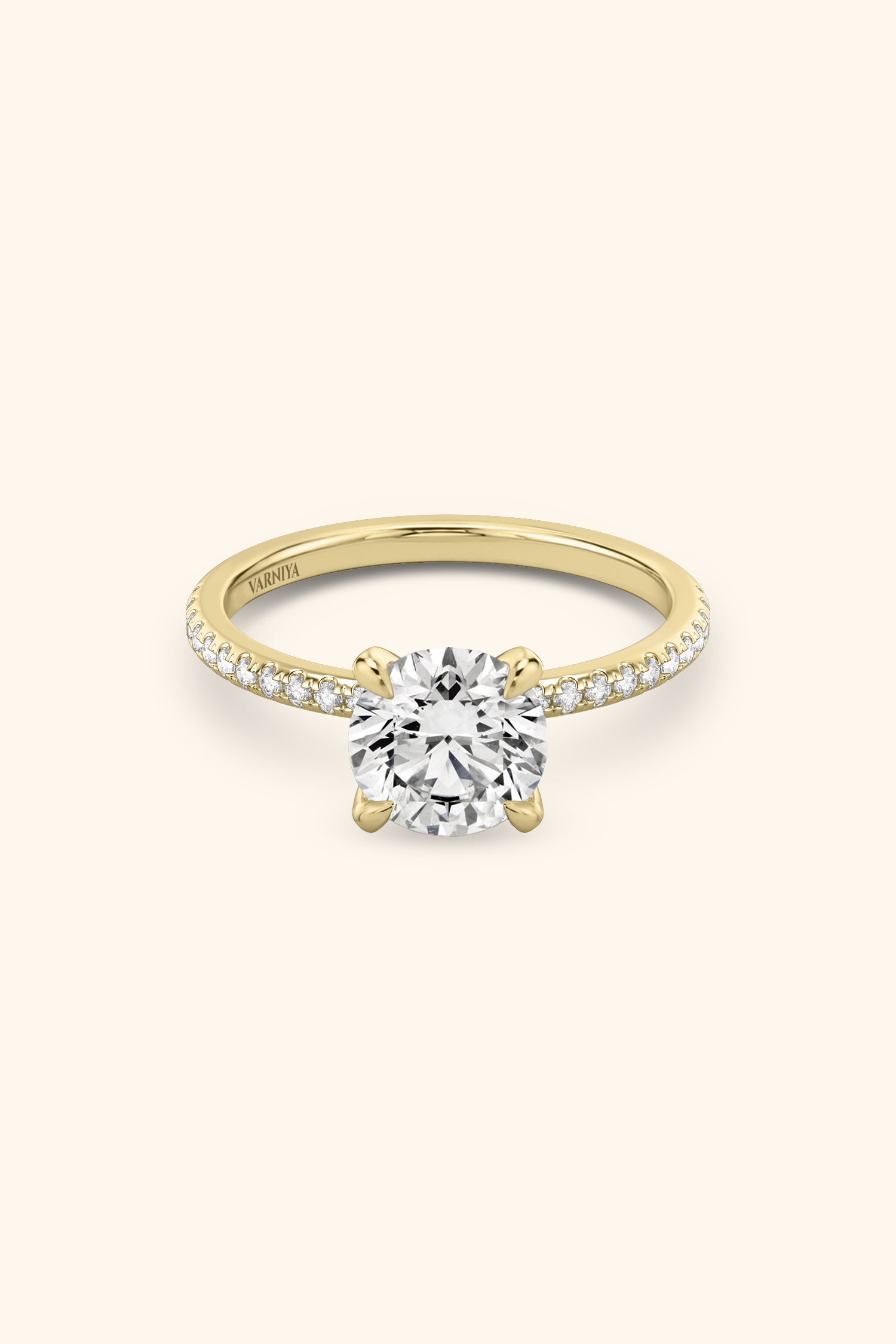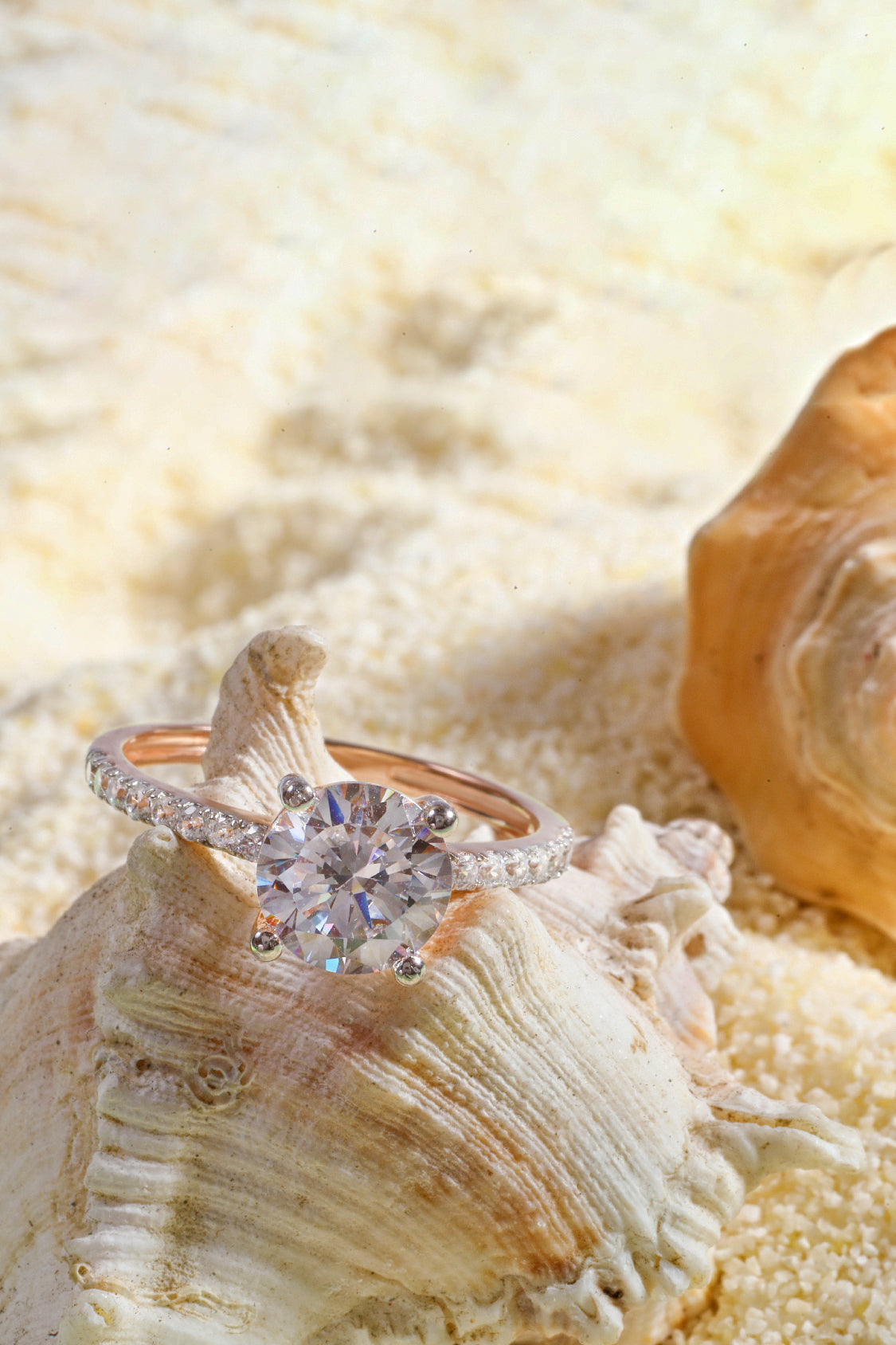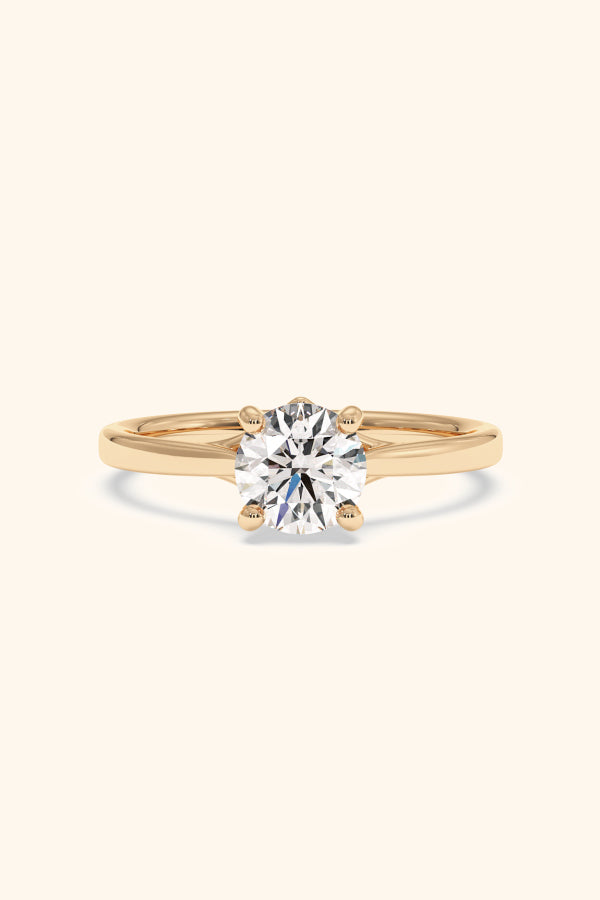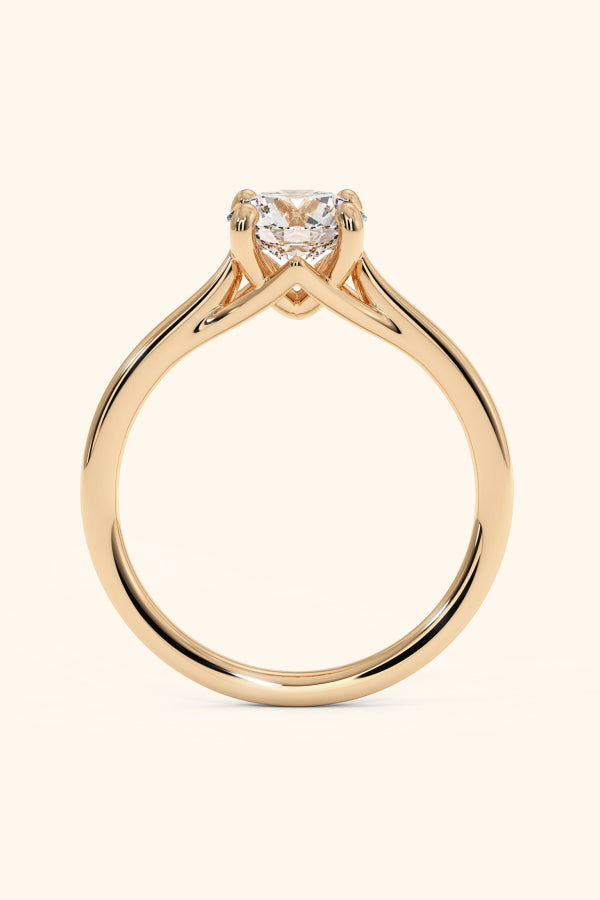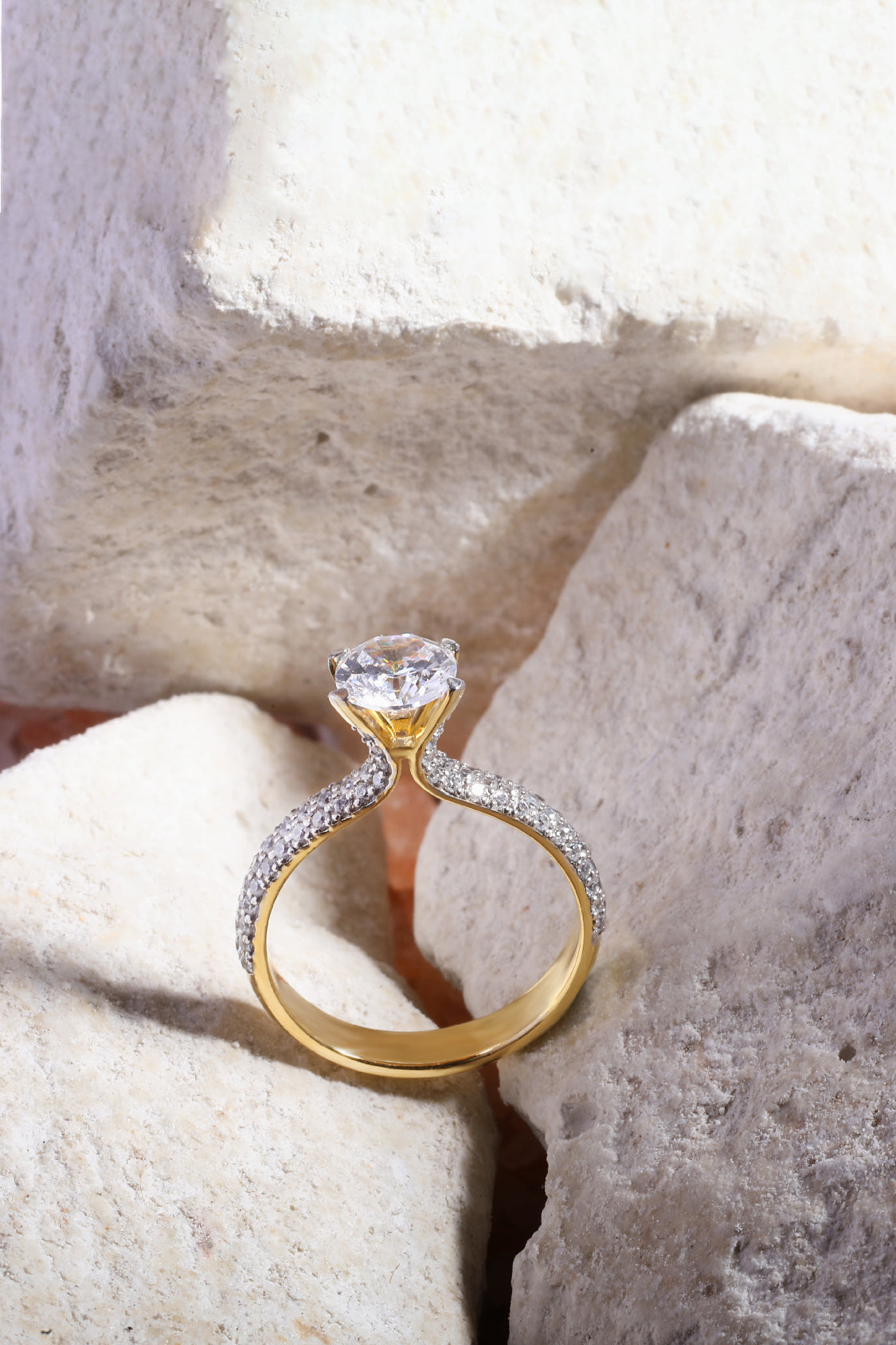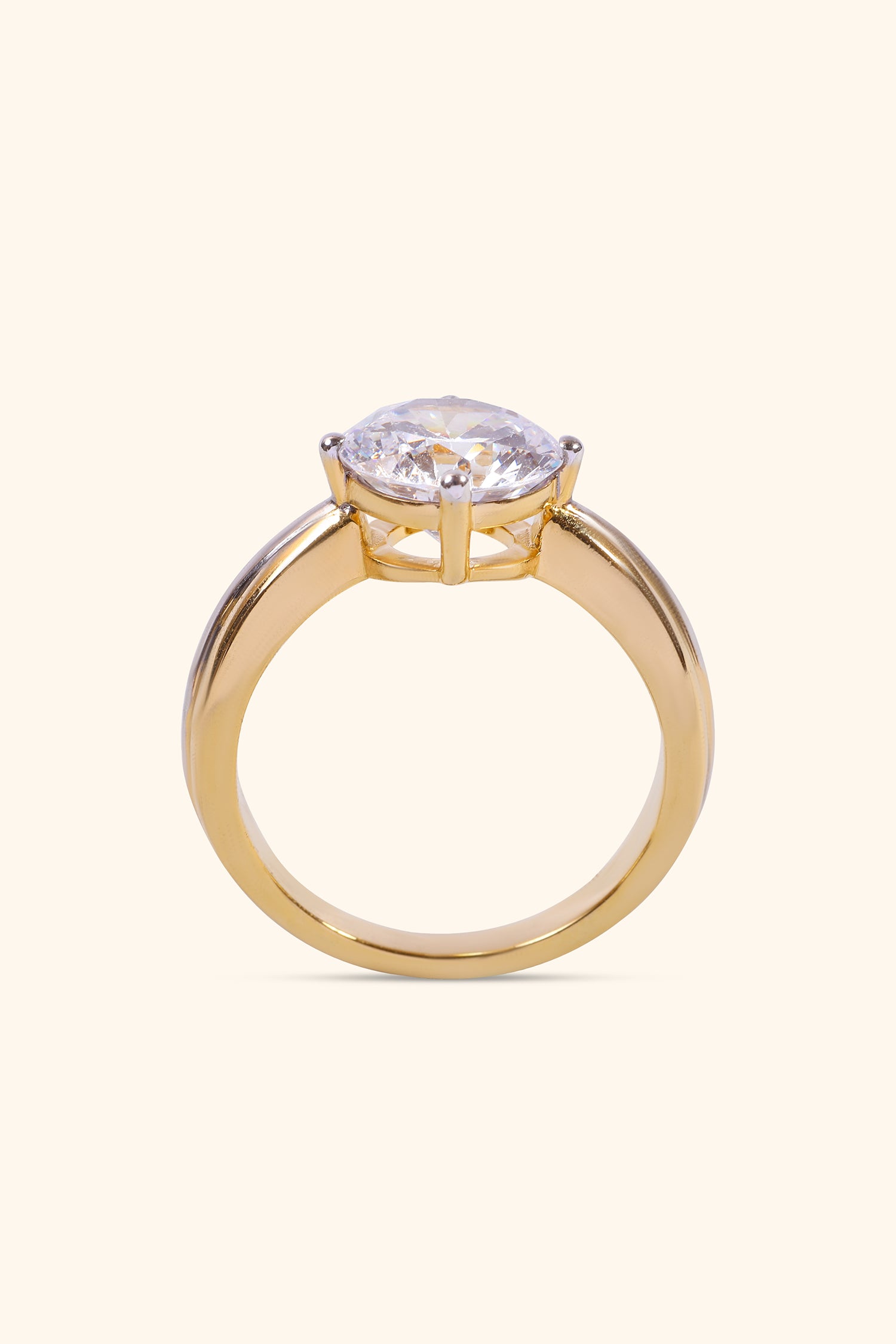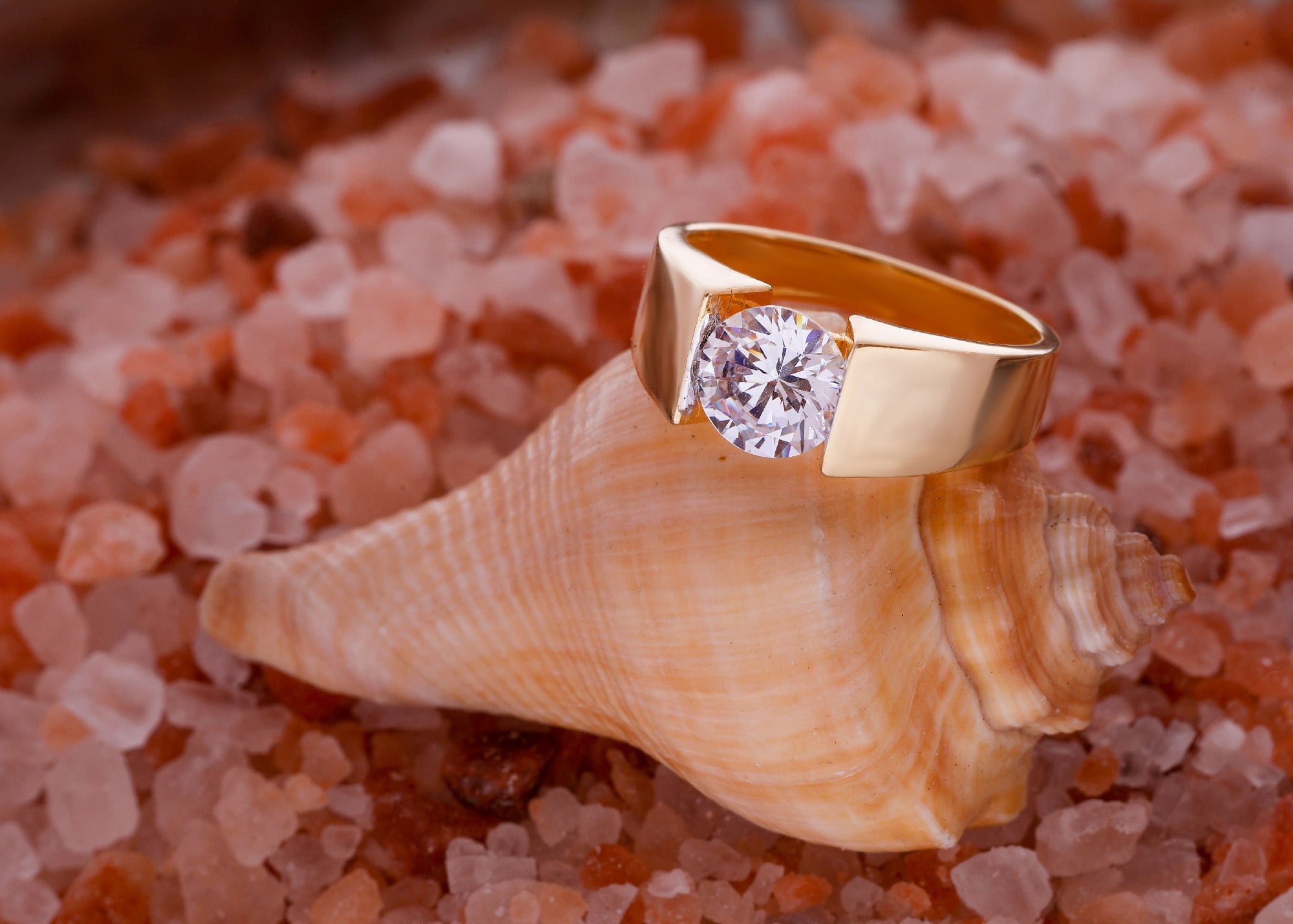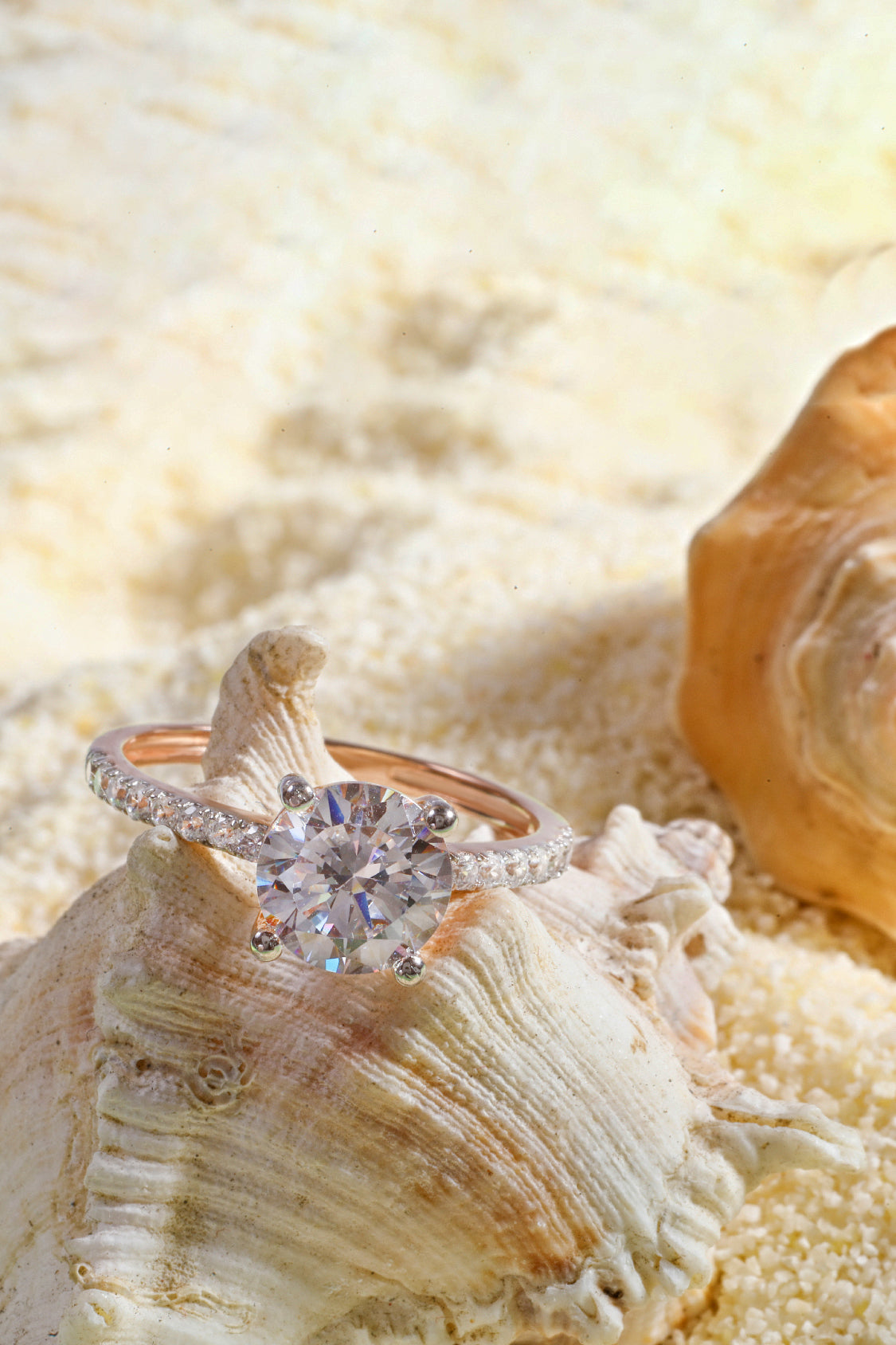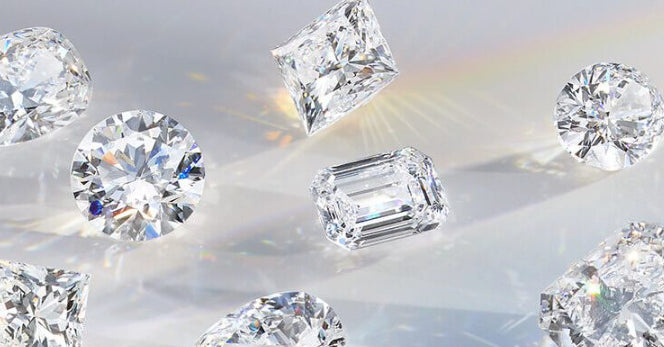Type 2a Lab Grown Diamond vs Others: Key Differences
If you’ve been exploring lab grown diamonds, you’ve probably come across the term type 2a lab grown diamond — and wondered what makes it so special. These diamonds are known for their exceptional purity, lacking the nitrogen impurities found in most other diamond types.
While they look visually similar to other lab diamonds or even natural diamonds, their chemical composition and clarity put them in a class of their own. In fact, according to the Gemological Institute of America (GIA), Type IIa diamonds make up less than 2% of all diamonds ever found.
In this article, we’ll walk you through how they’re made, how they compare to mined diamonds, and why they’re becoming a top choice in fine jewelry.
What is a Type 2a Lab Grown Diamond?
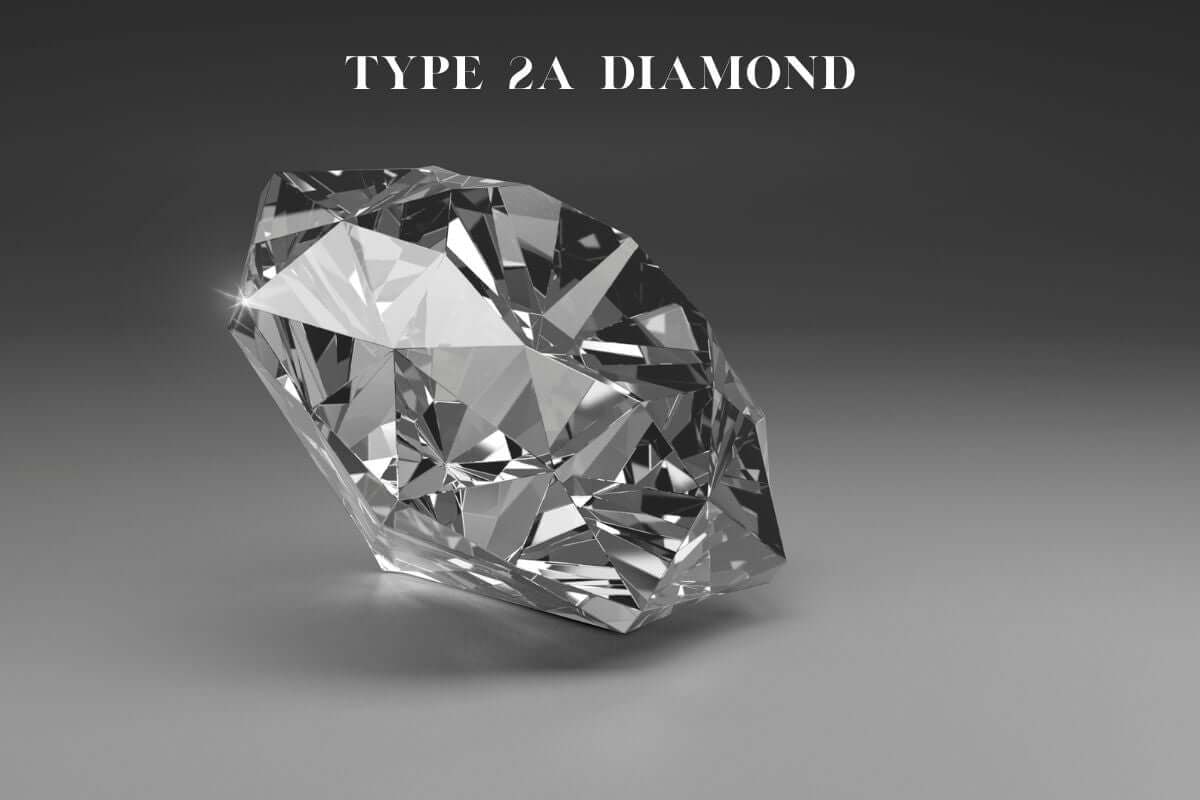
A type 2a lab grown diamond is known for its exceptional clarity and absence of nitrogen atoms, making it one of the purest diamonds ever created. These diamonds are grown in a controlled environment using methods like high pressure high temperature or chemical vapor deposition CVD.
Their crystal structure and chemical properties closely match those of rare natural diamonds from India's Golconda mines.
According to the Gemological Institute, “Type IIa diamonds show exceptional transparency due to their lack of impurities.”
Their crystal lattice is free from trace elements, boron impurities, or colored diamonds tones like light pink or light gray.
How Are Type 2a Lab Diamonds Made?
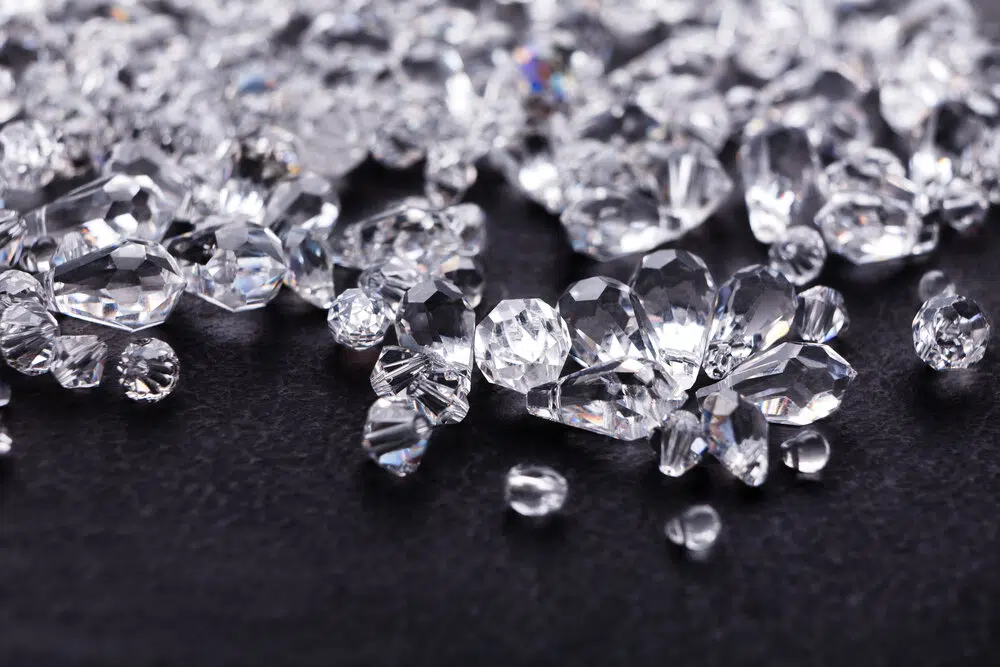
Creating a type 2a lab grown diamond involves replicating the natural conditions under which diamonds form—without mining them from the earth’s surface. These diamonds are made in a controlled environment, ensuring precision and consistency.
Two primary techniques are used in the lab: chemical vapor deposition and high pressure high temperature. Both methods influence the crystal lattice and chemical properties, which ultimately define the diamond’s quality, clarity, and classification.
1. Chemical Vapor Deposition (CVD)
The chemical vapor deposition (CVD) process begins with a thin slice of diamond, known as a seed, placed in a chamber filled with carbon-rich gases. These gases break down under high temperatures, allowing carbon atoms to settle on the seed and grow into a diamond.
This method produces diamonds with a pure crystal lattice structure and minimal trace elements, ideal for achieving the purest form.
CVD-grown diamonds can sometimes develop a light yellow tone, which is corrected through further treatment.
Unlike diamonds mined traditionally, this method avoids environmental disruption while achieving results nearly identical to nature.
2. High Pressure High Temperature (HPHT)
The high pressure high temperature technique mimics the intense pressure and heat found deep within the earth. Carbon is compressed until it forms a solid diamond with stable diamond's characteristics.
Depending on the presence of boron impurities or nitrogen atoms, the diamond may fall into categories like type iib diamonds or type ii diamonds.
This method is also used to enhance color, especially when reducing yellow hue or achieving clearer stones.
Notable stones like the hope diamond and the krupp diamond are historic examples of diamonds with rare structural features, unlike many synthetic diamonds produced today.
How Rare and Valuable Is It?
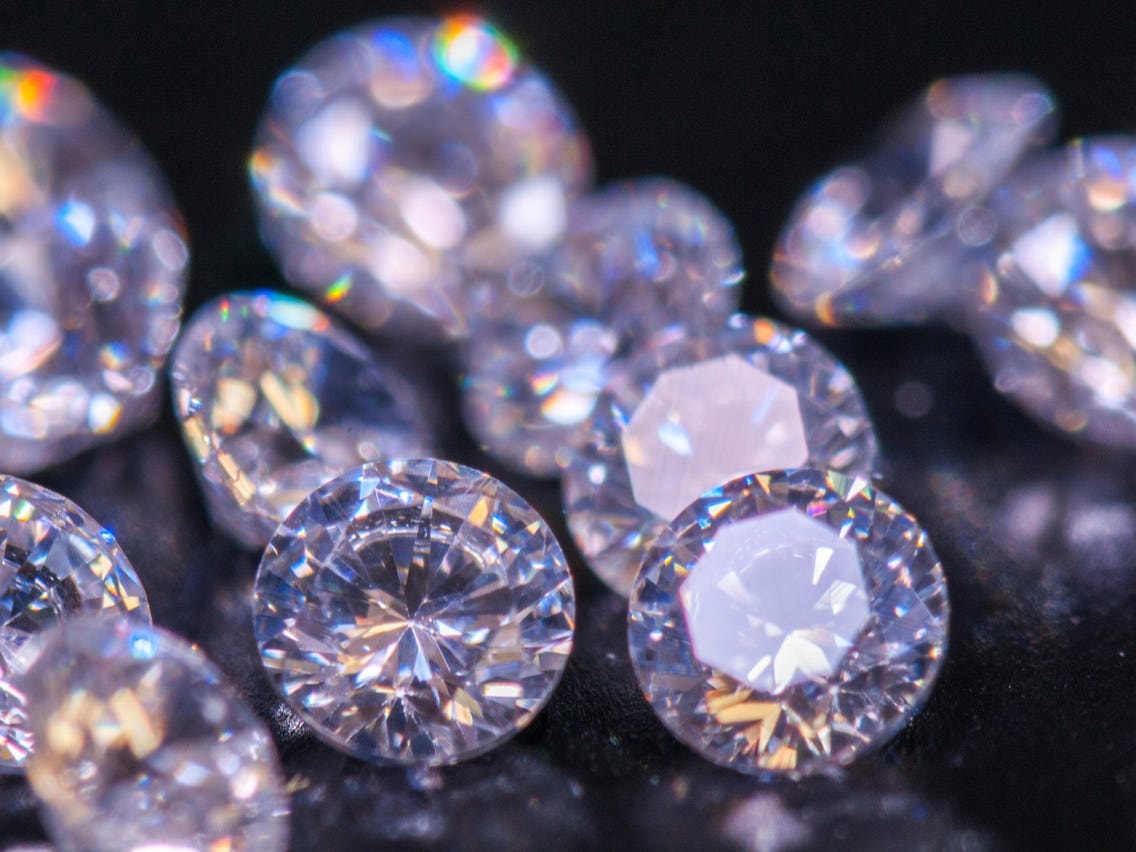
Type IIa diamonds are incredibly scarce, making them one of the most sought-after among all diamond types. These diamonds contain exceptionally few nitrogen atoms and are considered the purest form of carbon crystals.
Only a small portion of rough diamonds ever qualify as Type IIa, and this rarity naturally increases their value in both lab grown and natural forms.
Some of the world’s most famous diamonds—like the Cullinan Diamond, the Pink Legacy Diamond, and pieces in the British Crown Jewels—are known for their exceptional quality and purity.
Are Type IIa Diamonds More Expensive?
While lab grown diamonds are typically more affordable, type 2a lab grown diamonds with chemically pure structures and flawless carbon lattice formation still command a higher price than standard synthetic diamonds.
Several factors influence their price:
-
Carat weight and size of the stone
-
Absence of boron atoms, trace elements, and visible flaws
-
Clarity and brilliance among brilliant diamonds
-
Certification by institutes like the International Gemological Institute
-
Rarity compared to most diamonds or mined counterparts
Because of these traits, collectors and jewelers consider them not only rare but also valuable additions to diamond jewelry and precious gems collections.
How Do Type 2a Diamonds Compare to Other Diamond Types?
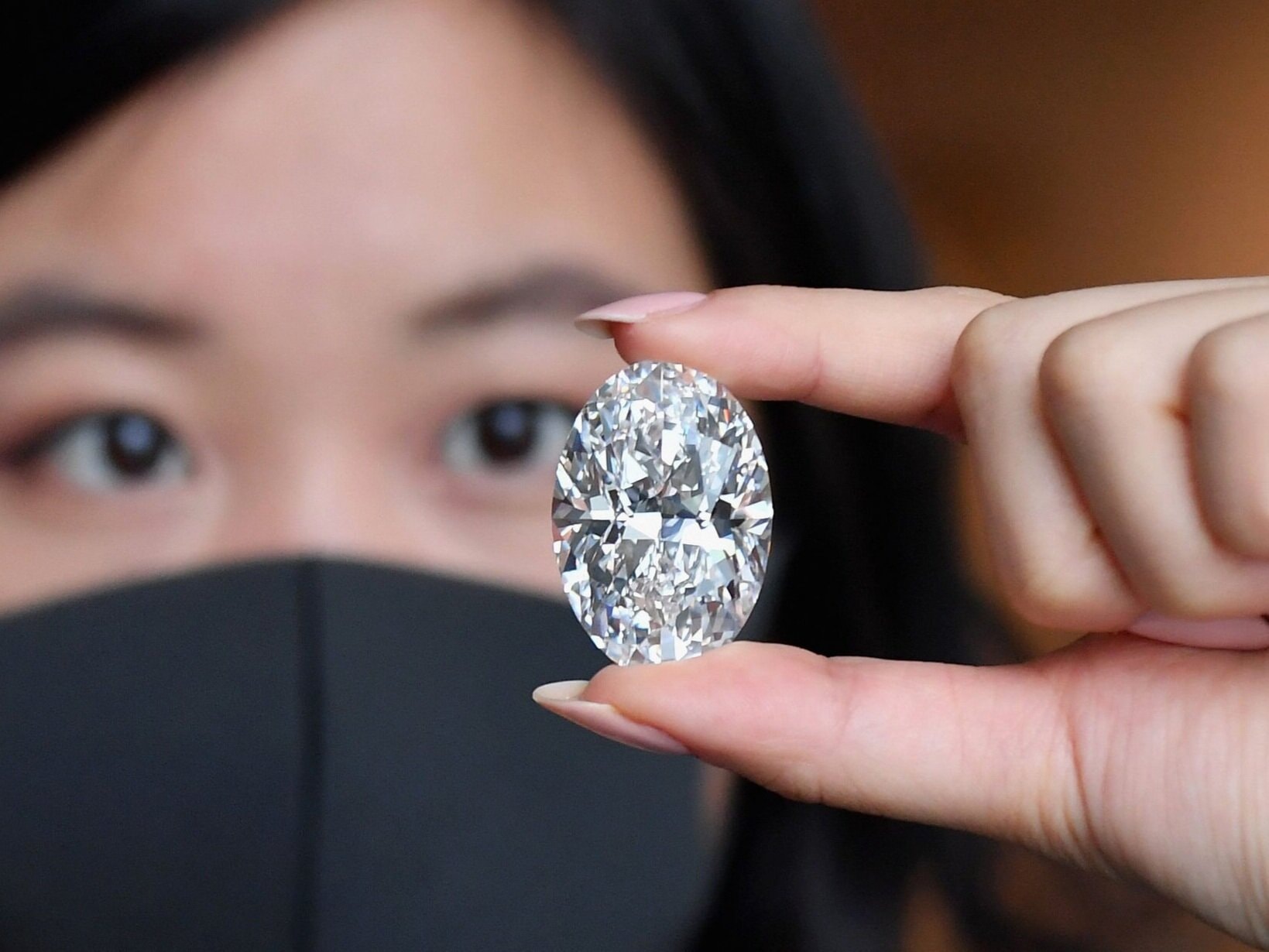
Diamonds may all sparkle, but not all are built the same. Their classification depends on chemical composition, especially the presence of nitrogen or boron atoms, which directly affects color, clarity, and value.
Whether you’re looking at a grown diamond or a mined one, understanding how type 2a lab grown diamonds differ from other types helps you make better, more informed choices. Let’s start with a quick breakdown of the most common diamond types and what makes each one unique.
Common diamond types overview

Diamonds are classified based on the presence and arrangement of impurities like nitrogen and boron. These trace elements influence a diamond’s color, clarity, and overall chemical behavior. This classification helps gemologists and buyers understand how diamonds differ in quality — especially when comparing rare types like type 2a lab grown diamonds with others.
-
Type Ia Diamonds
The most common type, making up about 95% of all natural diamonds. Nitrogen atoms are grouped in clusters, which often results in a yellowish or brownish tint. -
Type IIa Diamonds
These are extremely rare in nature and contain almost no nitrogen or boron. Their chemical purity results in outstanding transparency, making them highly valued in both gem and industrial use. -
Type Ib Diamonds
Only about 0.1% of diamonds fall into this category. Isolated nitrogen atoms give them deep, vibrant hues — especially in fancy yellow diamonds. -
Type IIb Diamonds
These are rare and contain boron, which gives the diamond a light blue shade. Interestingly, they’re also semiconductive, unlike other diamond types. -
Type II Diamonds
Encompassing both IIa and IIb, this category includes diamonds that are chemically purer and extremely rare, representing less than 2% of all diamonds.
Each type has distinct traits, but when it comes to light performance, purity, and value, Type IIa diamonds are often in a league of their own.
Grown diamond vs natural diamond
Lab grown and natural diamonds may look the same to the eye, but they differ in origin and certain physical traits. Let’s break it down:
|
Feature |
Grown Diamond |
Natural Diamond |
|---|---|---|
|
Origin |
Created in a lab |
Formed beneath the earth's surface |
|
Growth Time |
Weeks to months |
Millions of years |
|
Inclusions |
Often fewer |
Can be more prominent |
|
Trace Elements |
Carefully controlled |
Naturally occurring |
|
Structure |
Similar crystal form |
Natural crystal patterns |
|
Price Range |
Usually lower |
Typically higher |
Type 2a Lab Grown Diamond vs Others
Type 2a lab grown diamonds stand out from all other lab-grown and mined varieties due to their extreme purity. They’re grown in a precise environment to minimize imperfections.
|
Feature |
Type 2a Lab Grown Diamond |
Other Diamonds |
|---|---|---|
|
Nitrogen Presence |
Nearly zero |
Often present |
|
Purity |
Chemically pure |
May contain impurities |
|
Light Performance |
Excellent |
Varies |
|
Structural Consistency |
Very high |
Inconsistent in some cases |
|
Lab Classification |
Type IIa |
Type Ia, Ib, IIb, etc. |
When you look at the full picture, it's clear that type 2a lab grown diamonds stand apart for their exceptional purity, consistent structure, and light performance.
While other diamond types have their place—especially in colored or historically significant stones—Type IIa remains the preferred choice for those who value clarity and precision.
Whether you're choosing between natural diamonds, grown diamonds, or comparing lab classifications, understanding these differences helps you confidently select a diamond that fits both your values and your vision.
Why fine jewelry brands love Type 2a?
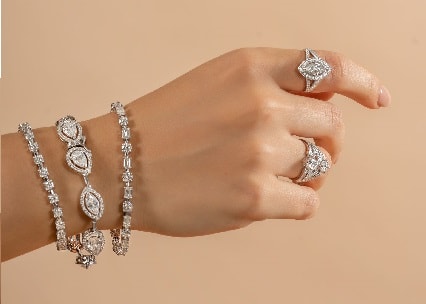
1. Superior Clarity and Purity
Type 2a diamonds are considered the most chemically pure diamonds in the world, often free from both nitrogen and boron impurities. This purity results in fewer internal flaws and an unmatched ability to reflect light cleanly.
According to the Gemological Institute of America (GIA), "Type IIa diamonds are the most chemically pure and often exhibit exceptional optical transparency."
This level of clarity allows designers to work with a clean base, enhancing the elegance of every cut.
2. Exceptional Brilliance and Sparkle
Because of their clean internal structure and minimal trace elements, Type 2a diamonds can refract and reflect light with remarkable precision. This leads to consistent sparkle, even in subtle lighting.
A study by Forbes reported that high-clarity diamonds like Type IIa tend to perform 18–25% better in light return than standard diamonds, a quality especially valued in high-end settings.
3. Durability and Longevity
Fine jewelry is made to last, and durability is essential. Type 2a diamonds are known for having a stable crystal lattice, which contributes to their hardness and long-term resistance to wear. This makes them ideal for pieces worn daily, like wedding bands or statement rings.
4. Ideal for Luxury Engagement Rings
Designers creating custom or luxury engagement rings often prefer Type 2a because of their rarity and refined appearance.
Their colorless quality gives jewelers a neutral canvas to pair with different metals and settings.
The International Gemological Institute (IGI) notes that Type IIa diamonds are more likely to achieve D–F color grades, which are the most desirable in engagement rings.
5. Ethical and Sustainable Choice
With growing awareness of sustainability, fine jewelry brands now seek diamonds that align with ethical sourcing. Type 2a diamonds—especially those grown in modern labs—can be traced and produced without environmental harm.
A 2023 report from Bain & Company stated that “over 60% of Gen Z and Millennial consumers consider lab-created diamonds more ethical and environmentally responsible than mined stones.”
Varniya: Bridging Tradition and Innovation in Fine Jewelry
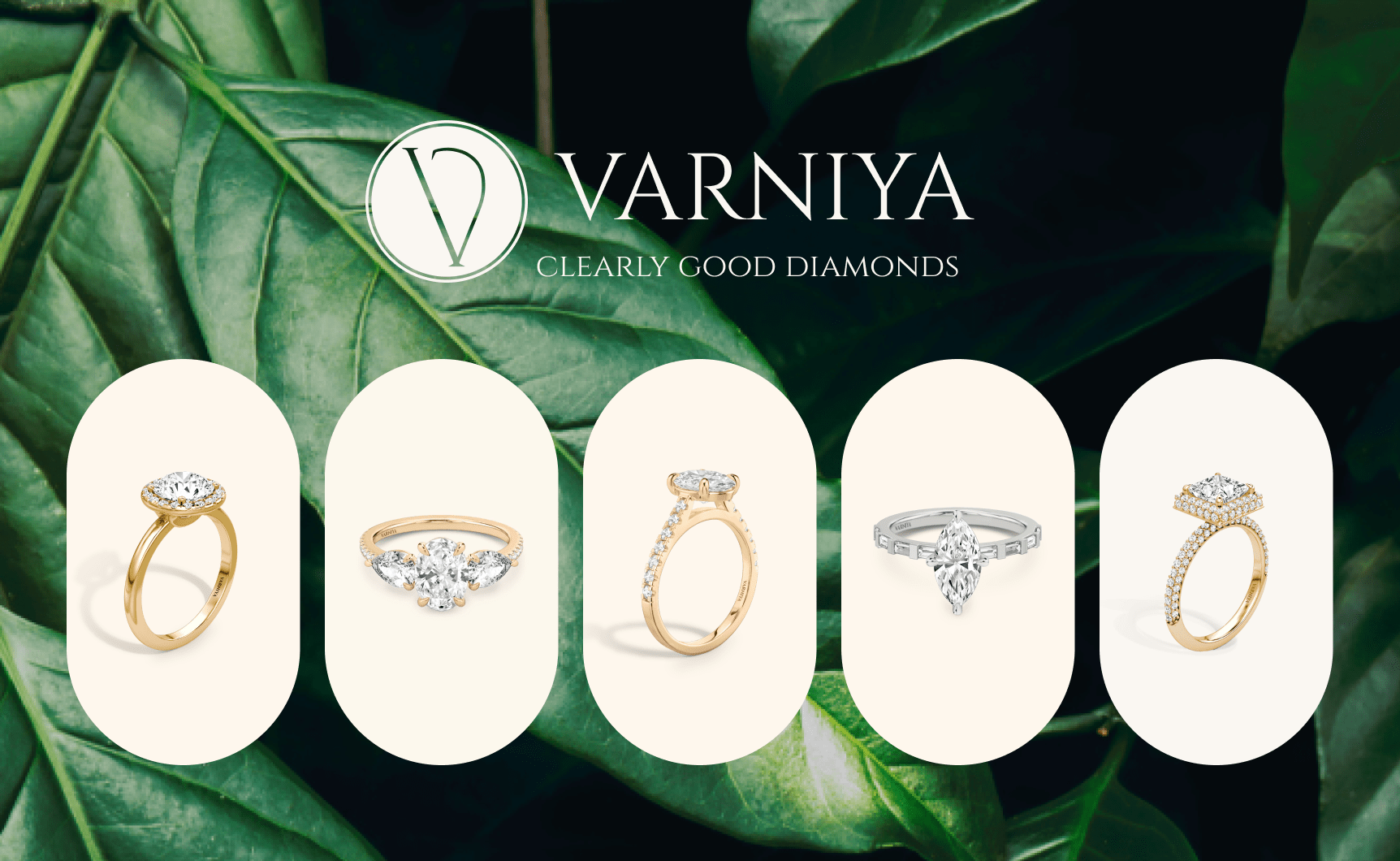
Varniya, established in 2023 by Divya and Varun Vummidi, is a distinguished fine jewelry brand specializing in lab-grown diamonds. Rooted in the Vummidi family's century-old legacy in the jewelry business, Varniya seamlessly blends traditional craftsmanship with modern innovation to offer sustainable and exquisite diamond jewelry.
Key Highlights of Varniya:
-
Ethical and Sustainable Practices: By focusing on lab-grown diamonds, Varniya ensures that each piece is environmentally friendly and conflict-free, addressing the ethical concerns associated with traditional diamond mining.
-
Exceptional Quality: Varniya's diamonds are meticulously crafted to meet the highest standards of brilliance and durability, offering customers a luxurious yet responsible choice in fine jewelry.
-
Customization Services: Understanding the unique preferences of each client, Varniya provides bespoke jewelry design services, allowing customers to create personalized pieces that reflect their individual style.
-
Diverse Collection: From engagement rings to earrings and pendants, Varniya offers a wide range of designs, ensuring there's something for every occasion and taste.
By choosing Varniya, customers not only adorn themselves with beautiful jewelry but also contribute to a more sustainable and ethical future in the world of fine jewelry.
Famous Type IIa Diamonds and Their Legacy
1. Famous Diamonds Throughout History
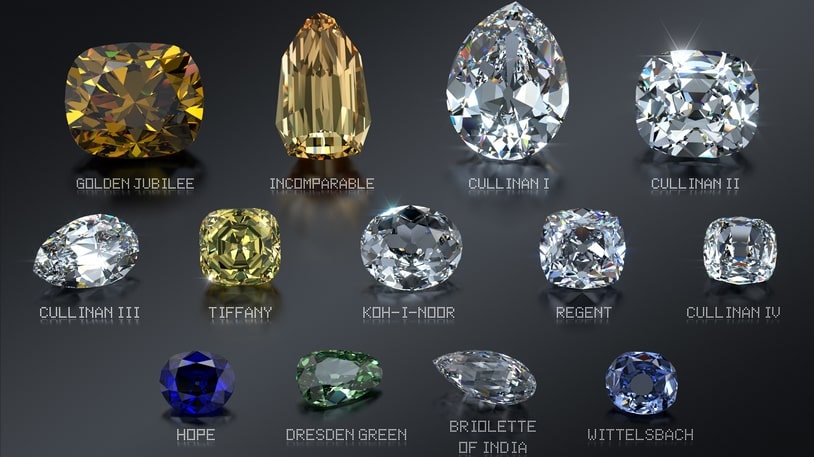
Type IIa diamonds have long fascinated collectors, gemologists, and royalty. Throughout history, these diamonds have been treasured not only for their size or sparkle but for their unique clarity and purity. Because they contain exceptionally few nitrogen impurities, they often appear colorless or subtly tinted, depending on trace elements.
According to the Gemological Institute of America (GIA), “Type IIa diamonds are the most chemically pure and often display exceptional optical transparency.” Their ability to transmit light almost flawlessly has made them popular choices for both luxury jewelry and high-precision tools.
In fact, Type IIa diamonds can exhibit extraordinary physical properties, which is why they’re also used in advanced industrial applications such as semiconductors and cutting tools.
These diamonds represent less than 2% of all naturally occurring diamonds, adding to their historical significance and rarity. Their purity significantly contributes to their market value and desirability among collectors, often making them headline-grabbing items at high-profile auctions.
2. The Archduke Joseph Diamond
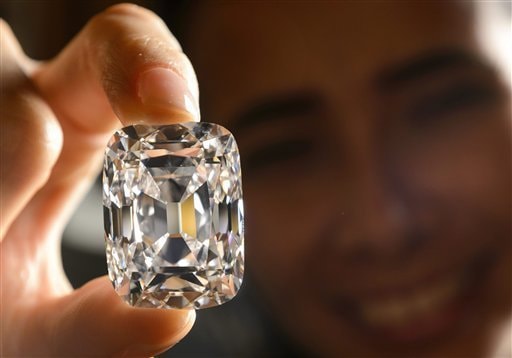
The Archduke Joseph Diamond is one of the most renowned Type IIa diamonds ever recorded. Discovered in the Golconda mines of India, it weighs over 76 carats and is praised for its D-color grade and internal flawlessness. When it was auctioned in 2012, it sold for $21.5 million—setting a world record at the time for a colorless diamond.
Its flawless nature and antique cushion cut are textbook examples of what makes a Type IIa diamond so appealing: pristine structure, historical provenance, and exceptional brilliance. According to Christie’s, this diamond represents “a rare blend of historic value and modern excellence.”
3. The Elizabeth Taylor Diamond

Originally known as the Krupp Diamond, the Elizabeth Taylor Diamond weighs 33.19 carats and is another celebrated Type IIa gem. It was given to Taylor by Richard Burton in 1968 and later renamed in her honor. Its Asscher cut emphasizes the diamond’s clean interior, and the absence of nitrogen gives it a crystal-clear appearance.
This diamond not only reflected Taylor’s personal style but also elevated the public's awareness of diamond classifications.
As noted by Forbes, “Elizabeth Taylor’s diamond helped redefine what luxury meant in Hollywood—purity over size, brilliance over brand.”
Conclusion
Choosing the right diamond starts with understanding what sets each type apart. Now that you’ve seen how a type 2a lab grown diamond compares to others, it’s easy to see why it stands out for purity, brilliance, and long-term value.
Whether you're shopping for fine jewelry or just exploring the differences, knowing what makes Type IIa diamonds special helps you make a more confident choice. And if you're drawn to clarity, ethical sourcing, and beauty that lasts—Type 2a is hard to beat. The sparkle may catch your eye, but the science behind it is what truly makes it rare.


